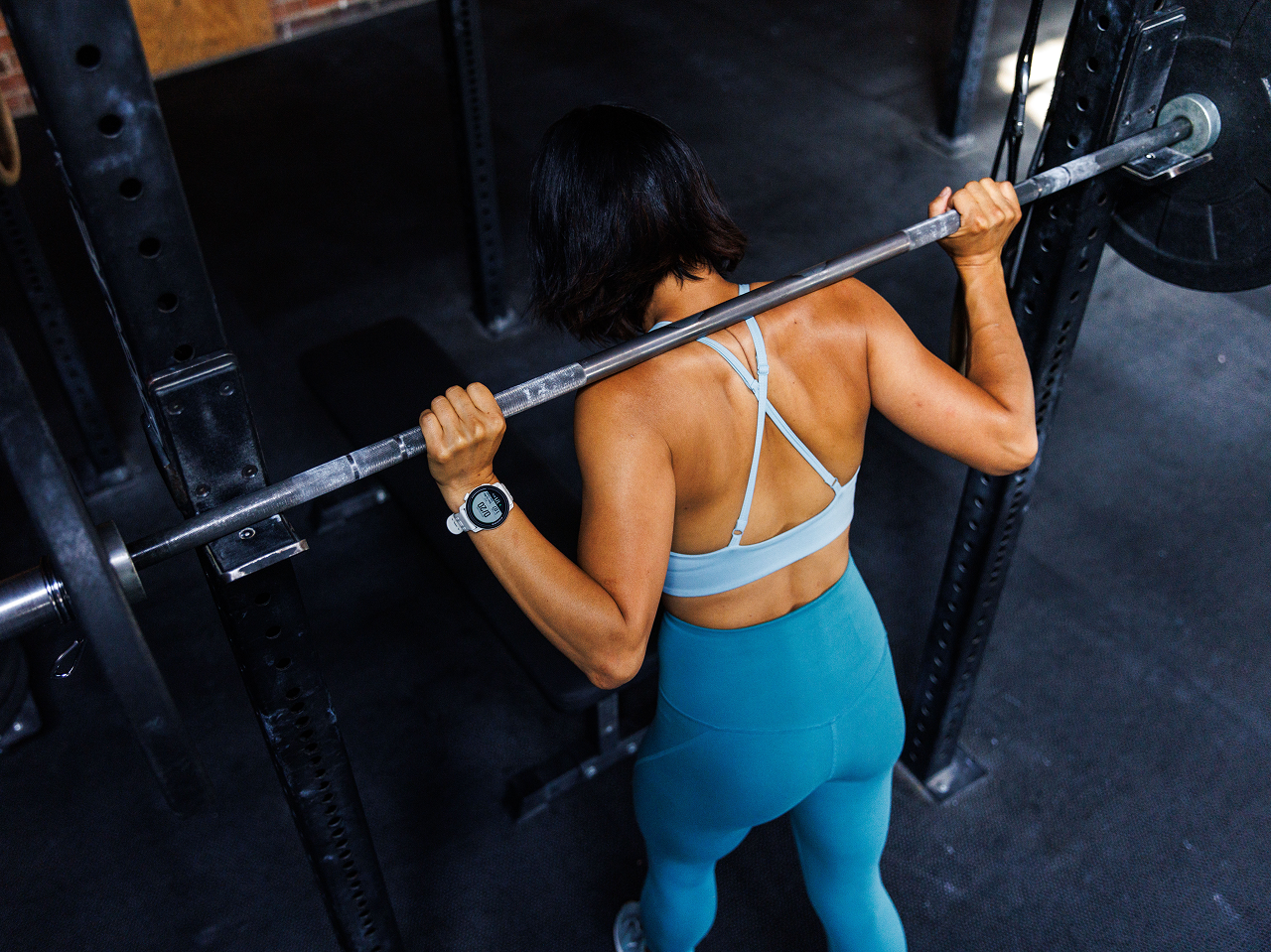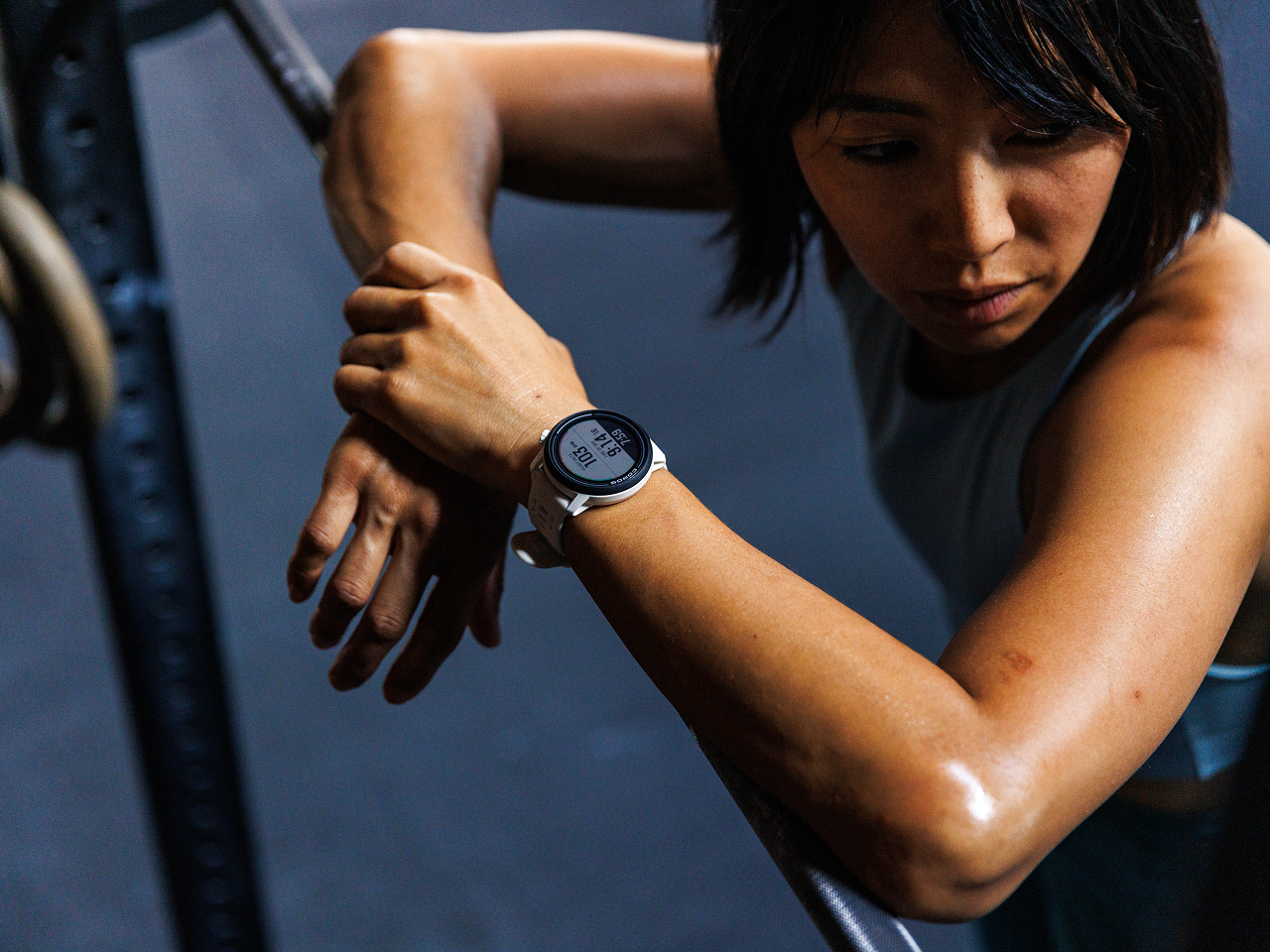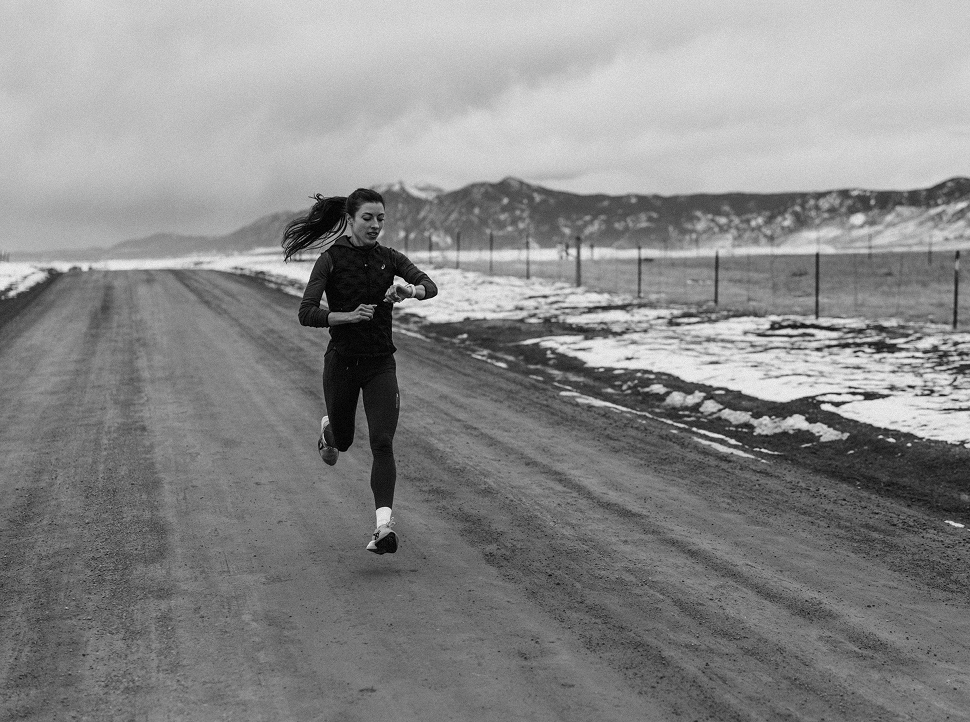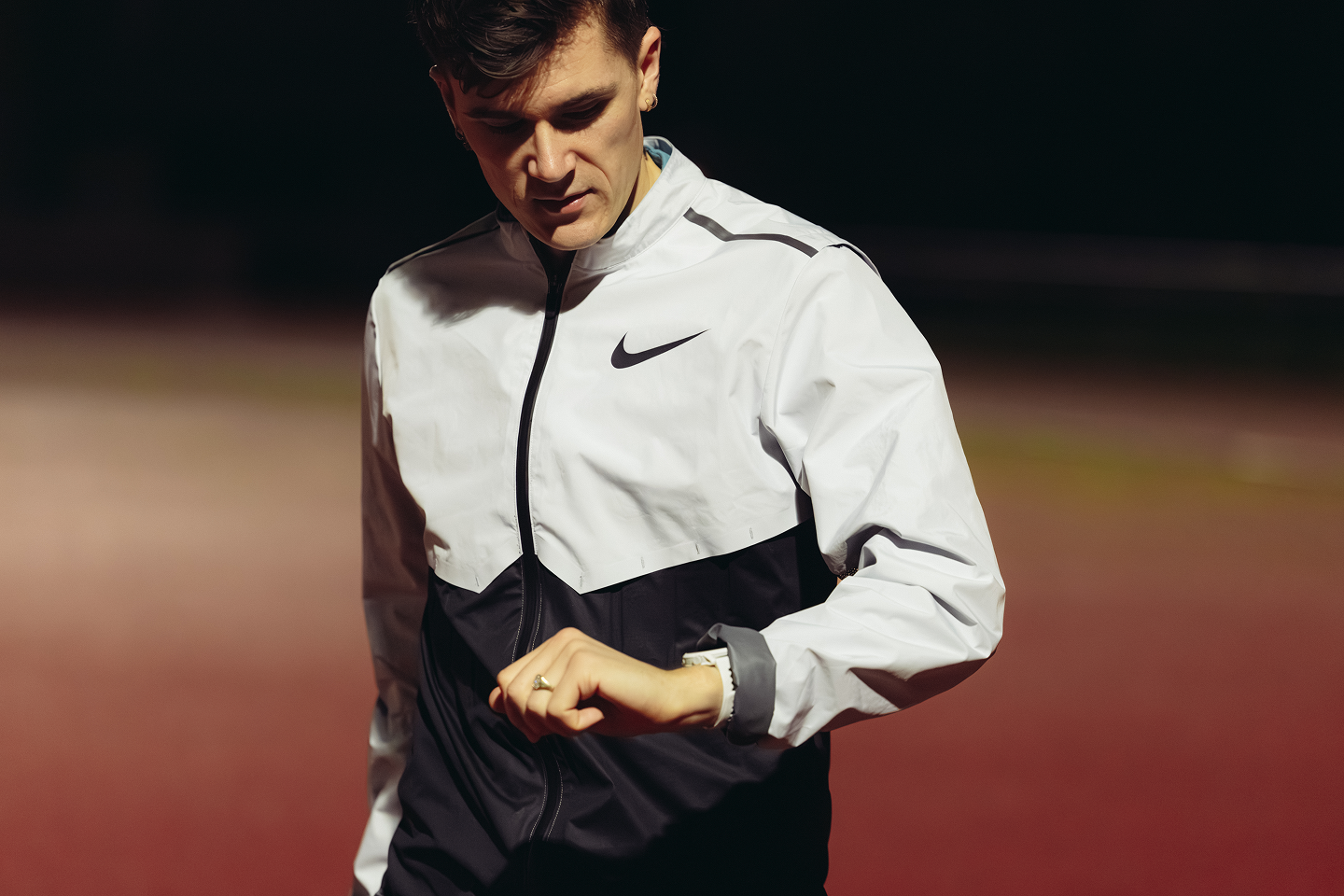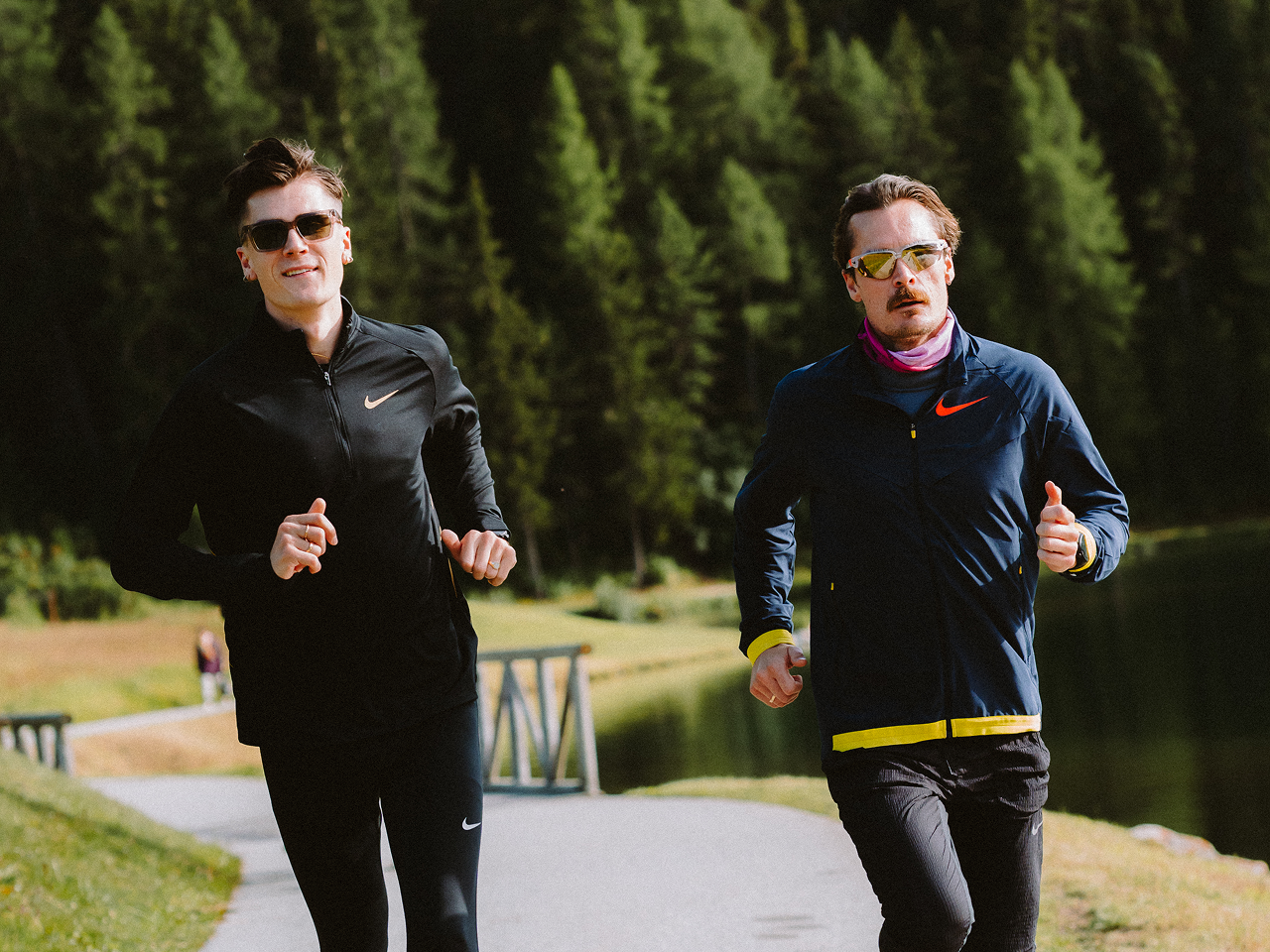As the leaves begin to change and the air grows cooler, runners across the country prepare for one of the most exciting times of the year: the 5K and cross country season. A critical point in this preparation is the transition from the base phase into a build phase. This period marks a shift from establishing a solid aerobic foundation to incorporating more race-specific workouts that enhance speed and endurance. Understanding and navigating this transition is essential for maximizing performance and preventing injuries.
Understanding Base Training
The base phase, often referred to as the "off-season" or "pre-season," is a period where the primary goal is to build an aerobic foundation. This phase typically lasts several weeks to a few months, depending on the runner's experience and goals. The structure and workouts in the base phase include:
• Aerobic Development: The focus is on long, steady runs at a comfortable pace to enhance cardiovascular efficiency and endurance. These runs are usually at a conversational pace and can range from 30 minutes to over an hour, depending on the runner's fitness level.
• Strength Training: Incorporating strength workouts helps build muscular endurance and prevent injuries. This might include bodyweight exercises, resistance training, and core workouts performed 2-3 times per week.
- Bodyweight Workout - For increasing muscular endurance
- Full-Body Strength Workout - For increasing muscular strength
- Core Workout for Runners - For staying strong & stable during runs
• Flexibility and Mobility: Regular stretching and mobility exercises ensure the body remains supple and reduces the risk of injuries. Dynamic warm ups before runs and static stretches after runs are common practices.
• Consistency: Gradually increasing mileage week by week. This is typically done without significant speed work. Increasing both volume and intensity at the same time can lead to overtraining and burnout. Runners might start at a lower weekly volume and add around 10% each week.
COROS Education: Monitoring Training Load (TL) is an excellent way to prevent overtraining. TL is a measure of both volume and intensity. Increasing both volume and intensity at the same time will cause TL to spike - so try to keep a gradual upward trend in TL and avoid any sharp increases.
Importance of the Base Phase
Building a solid aerobic base is crucial for several reasons:
• Increased Endurance: Allows runners to sustain effort over longer periods, crucial for the demands of a 5K or XC race.
• Improved Recovery: Base fitness enhances the body’s ability to recover between intense workouts.
• Injury Prevention: A gradual build-up of mileage strengthens muscles, tendons, and ligaments, reducing the risk of injury.
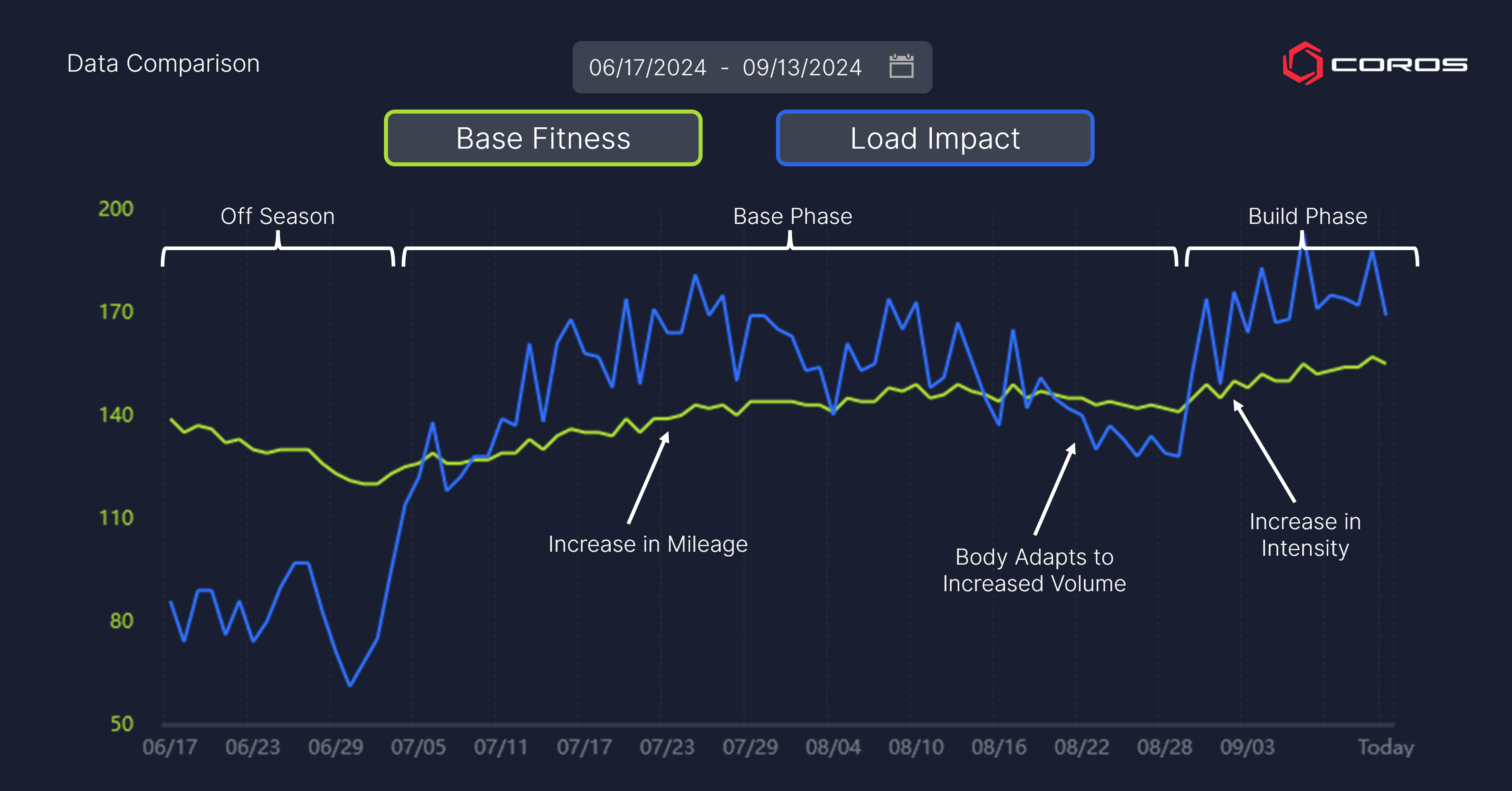
An example of a well-executed transition from the base into the build phase
Up Next: The Build Phase
As the racing season approaches, runners shift from the base phase to the build phase. This phase typically begins 6-8 weeks before the first key race of the season. The primary focus of the build phase is to introduce more race-specific workouts while maintaining the aerobic base developed during the base phase. Key components of a build phase include:
• Introduction of Speed Work: Incorporating interval training, tempo runs, and fartlek sessions to improve speed and race pace. Some coaches will even incorporate tempo or fartlek features into a weekly long run to raise the intensity.
• Race-Specific Workouts: Tailoring workouts to mimic race conditions and demands, such as hill repeats or running on grass for cross country. This helps runners adapt to the specific challenges they will face on race day.
• Increased Intensity: Gradually increasing the intensity of workouts to prepare the body for the demands of racing. This includes more challenging tempo runs and intervals at or above race pace. The intensity builds towards a "Peak" late in the season, before tapering off for the important race(s).
Moving from Base to Build Phase
Transitioning between the base and build phases requires careful planning to avoid overtraining and injury. Here are some key guidelines:
• Gradual Progression: Avoid making drastic changes. Gradually introduce speed work and intensity, ensuring the body has time to adapt.
• Separate Volume and Intensity Increases: Do not increase volume and intensity simultaneously. The base phase is often used for increasing volume. During the build phase, focus on increasing intensity and the quality of your workouts.
• Monitor Recovery: Pay close attention to recovery. Using a COROS watch can provide valuable data on heart rate, pace, and recovery, helping runners make informed decisions about their training. Key metrics to track include heart rate variability (HRV), resting heart rate (RHR), and the recovery timer.
COROS Education: Heart Rate Variability (HRV) is one of the best monitoring tools to assess your stress levels and training readiness. It measures the fatigue in your nervous system, seeing if it is stable enough to take on a high-intensity session, or perhaps require additional rest.
The base-to-build transition is a critical time in preparing for a successful 5K or cross country season. By gradually increasing intensity, incorporating race-specific workouts, and monitoring key metrics, runners can ensure they start their season off right. Remember, the key to a successful transition lies in balancing hard work with adequate recovery, allowing the body to adapt and thrive under the increased demands of racing. With a well-executed build phase, runners will be well-prepared to toe the line with confidence and chase their personal bests.
How Can COROS Coaches Help?
COROS Coaches are a team of dedicated and certified coaches that can guide you in your training and understanding your metrics, for free. Email them at coach@coros.com today and get the discussion going on how to best structure your training for your upcoming training cycle!

/filters:quality(90)/fit-in/970x750/coros-web-faq/upload/images/faef3ea2aec4ee6a297ea30d67431ec9.png)

